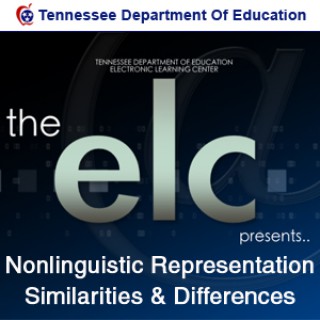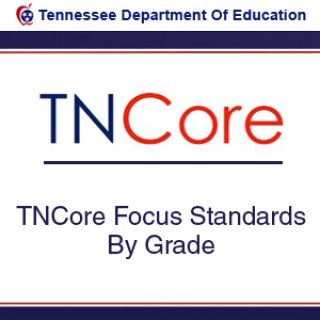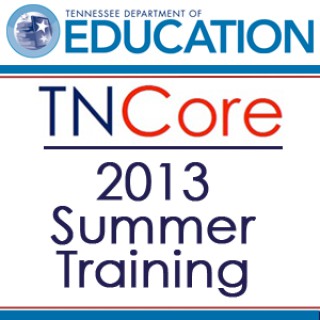
Nonlinguistic Representation - Similarities & Differences
Follow Nonlinguistic Representation - Similarities & DifferencesThis series will feature Tennessee teachers working together to implement effective teaching practice into all Tennessee classrooms. Nine instructional strategies have been identified that are most likely to improve student achievement across all content areas and grade levels. These strategies are…
Tennessee State Department of Education
- Nov 10, 2010 LATEST EPISODE
- infrequent NEW EPISODES
- 14m AVG DURATION
- 8 EPISODES
More podcasts from Tennessee State Department of Education
Latest episodes from Nonlinguistic Representation - Similarities & Differences

The learner will: - relate to literature being taught - Work in groups to understand the content of the text - Create appropriate questions that relate to the content of the text - Come away with an understanding of specific literary terms Tennessee Standards: CLE 3001.8.2 – Understand the characteristics of various literary genres. SPI 3001.8.5 – Determine the significance/meaning of a symbol in poetry or prose CLE 3001.8.3 – Recognize the conventions of various literary genres and understand how they articulate the writer’s vision CLE 3001.8.5 – Know and use appropriate literary terms to derive meaning and comprehension from various literary genres. CLE 3001.2.1 – Demonstrate critical listening skills essential for comprehension, evaluation, problem solving and task completion. CLE 3001.2.7 – Participate in work teams and group discussions

Learning Objectives The learner will: Work in groups to understand the content of the text Create appropriate questions that relate to the content of the text Come away with an understanding of facts gleaned from primary documents Make connections between this text and other texts used in this unit of study Tennessee Standards: GLE 0801.2.7 Participate in work teams and group discussions. SPI 0801.3.1 Identify the purpose for writing (i.e., to inform, to describe, to explain, to persuade, to entertain). SPI 0801.4.4 Distinguish between primary sources (i.e., interviews, letters, diaries, newspapers, autobiographies, personal narratives) and secondary sources (i.e., reference books, periodicals, Internet, biographies, informational texts). GLE 0801.5.1 Use logic to make inferences and draw conclusions in a variety of oral and written contexts. GLE 0801.5.4 Analyze written and oral communication for persuasive devices. 0801.7.2 Identify, analyze, and discuss the relationship between the visual (e.g., media images, painting, film, graphic arts) and the verbal in media and explain how the elements support or conflict with each other. Purpose – 8th Grade Language Arts Class – Working through primary documents to gain information and connect various text mediums.

The learner will: - Identify the cellular organelles associated with major cell processes. - Compare the structure and function of cellular organelles in eukaryotic cells. - Construct a model of the eukaryotic cell. - Have an opportunity to ask questions for clarification Tennessee Standards: - CLE 3210.1.1- Compare the structure and function of cellular organelles in both prokaryotic and eukaryotic cells. - CU- 3210.1.2- Construct a model of a prokaryotic or eukaryotic cell. - SPI- 3210.1.1- Identify the cellular organelles associated with major cell processes.

The learner will: - multiply a 2 digit numbers by a two digit number - use data generators to generate numbers to multiply Tennessee Standards: - GLE 0406.2.2- Develop fluency with multiplication and single-digit division - Checks for understanding-0406.2.3- Multiply two and three digit whole numbers - SPI 0406.2.11- Solve problems using whole number multi-digit multiplication

In this exciting new series, Tennessee teachers show and discuss how they are implementing the research-based instructional strategies that are most likely to improve student achievement across all content areas and grade levels. In this session, the strategies of nonlinguistic representation and similarities and differences will be featured.

In this exciting new series, Tennessee teachers show and discuss how they are implementing the research-based instructional strategies that are most likely to improve student achievement across all content areas and grade levels. In this session, the strategies of nonlinguistic representation and similarities and differences will be featured.

In this exciting new series, Tennessee teachers show and discuss how they are implementing the research-based instructional strategies that are most likely to improve student achievement across all content areas and grade levels. In this session, the strategies of nonlinguistic representation and similarities and differences will be featured.

In this exciting new series, Tennessee teachers show and discuss how they are implementing the research-based instructional strategies that are most likely to improve student achievement across all content areas and grade levels. In this session, the strategies of nonlinguistic representation and similarities and differences will be featured.

















